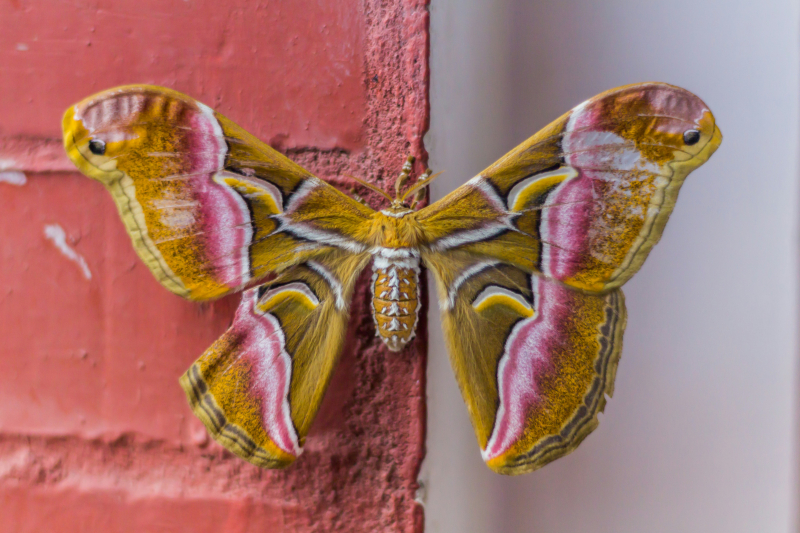Moth

Let's look closer at the nocturnal wonders of the insect world – moths. These winged creatures often flutter around our porch lights at night, showcasing various shapes, sizes, and patterns.
Moths live in every corner of the globe, from tropical rainforests to your backyard! They come in all shapes and sizes, from tiny micro-moths smaller than your pinky fingernail to the wingspan-of-your-head luna moth. Some hang out in dark places like caves and basements, while others prefer the cool breeze of the night air.
Moths have a sweet tooth like you wouldn't believe! They're mostly flower feeders, using their long tongues to reach inside blossoms and sip nectar. Some moths are even night-time pollinators, flitting from flower to flower, helping plants spread their pollen and make new seeds. But not all moths stick to a vegetarian diet. Some munch on leaves, while others, like the clothes moth, might nibble at your sweaters.
They're masters of disguise! Some mimic leaves, twigs, or even bark, blending seamlessly into their surroundings to avoid predators. Others have bright, flashy patterns that warn predators they're not tasty treats. And some moths can even see light in the ultraviolet spectrum, a superpower humans don't have!
One unique trait of moths is their ability to produce silk. While not as renowned as their silk-spinning relatives, the silk moths, some species use silk to create protective cocoons for their pupal stages. It's like they've added a touch of silkiness to their already fascinating life cycles.
In a nutshell, moths are the enchanting dancers of the night, bringing their delicate wings and subtle charm to the moonlit hours. Their diverse species, pollination prowess, and unique adaptations make them the nocturnal performers that add a touch of magic to our evenings.















